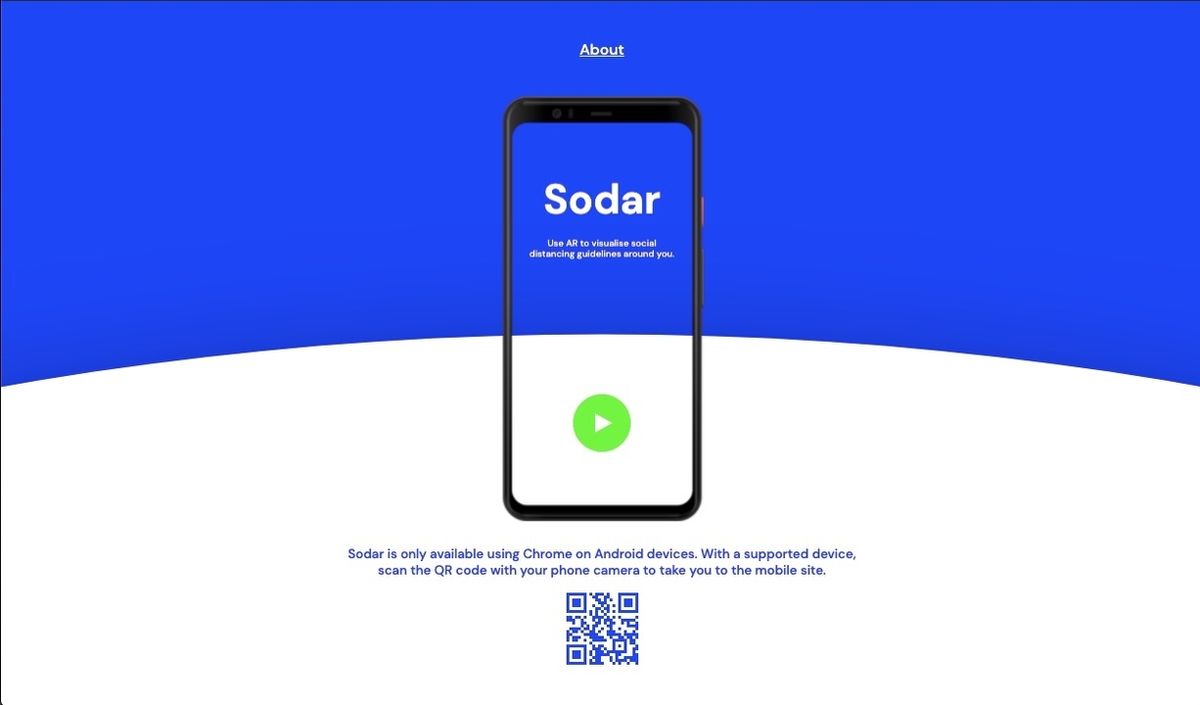
As lockdowns are being replaced by unlock across India, the importance of social distancing as a means to curb contact spread of Covid-19 assumes greater importance. Google has now stepped in with an augmented reality based app that could help maintain safe distance.
The SODAR is currently available on Android phones. Users can simply open the Chrome browser and go to the webpage to get started. At present users do not need to download anything though it doesn’t work on iOS or even on older Android devices.
Sodar – use WebXR to help visualise social distancing guidelines in your environment. Using Sodar on supported mobile devices, create an augmented reality two meter radius ring around you. #hacktohelp https://t.co/Bu78QrEN9f pic.twitter.com/kufatNFDQkMay 28, 2020
The phone starts using the augmented reality of the map around your location and then does a superimposition of a two meter radius circle on the camera’s view. So, once you are logged on, you are constantly monitoring the camera on your phone.
While testing it out, I found the accuracy to be in the acceptable range though one did feel at times that it wasn’t exactly two meters that the screen seemed to suggest. Of course, the choice to move away from a person is completely yours as SODAR doesn’t give instructions or even blink warning signals in case of violations.
Does it work better than the social distancing app called 1point5 (get it on Play Store) that the United Nations came up with to achieve the same outcomes? Most definitely as this app requires all users to be connected to Bluetooth, the same as India’s own Aarogya Setu app.
Google’s SODAR doesn’t require users to install anything nor people around them to carry their smartphones with Bluetooth switched on. The augmented reality uses WebXR to visualise a two-meter radius on the map and sets up a virtual ring on the screen using the camera. Will it consume battery life? Only as much as a camera does.
After many weeks of development & iterations, we proudly present the #1point5app, by @UN Technology Innovation Labs @UNTILabs. A story coming up!Now available in @GooglePlay & @AppStore, find the download links at 📲 https://t.co/UrkjDBMJRI#socialdistancing #flattenthecurve pic.twitter.com/hJgSpg9KXQApril 30, 2020
Does it all make sense?
How useful is this tool likely to be during the next phase of Covid-19 unlocking? Not very, I’m afraid as any person who is concerned about maintaining a safe distance would definitely not need their phone to tell them about the safety zone. That’s why eyes are there for, isn’t it?
While the technology used is far better than what existing apps have come up with in the form of Bluetooth beacons, the fact remains that running the camera all the time through a crowded lane isn’t exactly going to help users avoid contact. What’s more it could prove a recipe for contact with others as the human body isn’t exactly geared with equipment that auto-steers us out of harm’s way.
So, this one looks like an intellectual exercise undertaken by “Experiments with Google” that has created interesting and often eye-popping stuff using Chrome though not many of them have passed muster at usability level.
